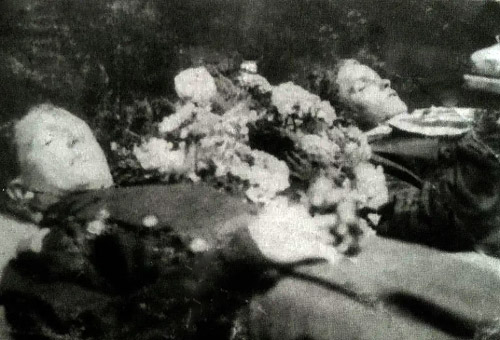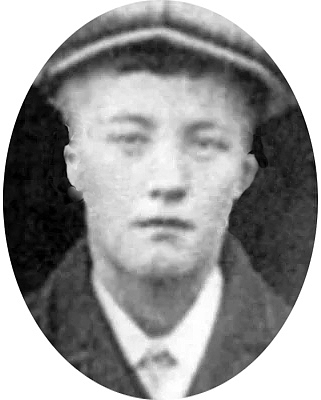In 1922 an agreement was reached between the British and the newly formed Provisional, 26 county, Irish government, to disband the Royal Irish Constabulary (RIC). To this end, in February of 1922, a meeting was held at the Gresham Hotel, Dublin. The purpose of this meeting was to establish a police force to replace the now exiting RIC force.
Thus, on February 22nd, 1922, the “Civic Guard” was formed, before later being renamed “An Garda Síochána”, (an unarmed force), on August 8th, 1923.
This Civic Guard had initially been armed and were trained first at the Royal Dublin Society Showgrounds, Ballsbridge, Dublin, on April 25th 1922; then transferred to Kildare Military Barracks, Co. Kildare; before being transferred to Collinstown, Santry, Dublin.
Eventually the force would take up residence at the former Royal Irish Constabulary depot, built in 1842, in the Phoenix Park, Dublin, in early 1923. (Later, in 1963, a new Training Centre was established in the old military barracks at Templemore, North Co. Tipperary.)

A troubled birth of this newly formed Garda force saw a mutiny in Kildare, same due to the objection of some of its members to the promotion to its senior ranks, of ex-members of the RIC. It took a personal visit by Michael Collins, to the Kildare Barracks in mid-May 1922, which resulted in an uneasy peace among the ranks of trainee Civic Guards.
This was followed by the first Civic Guard commissioner, Mr Michael Staines, [a former member of the IRB and TD], (May 1st 1885 – October 26th 1955), tendering his resignation on August 18th. Same brought about following the deaths of Fianna Eireann officers, 19 year old John Cole (electrician) and 21 year old Alfred Colley (tinsmith), both murdered; shot dead in the Yellow Lane, Whitehall, Dublin, possibly by Intelligence Officers, previously controlled by Michael Collins.
Indeed, it was believed to be an act of reprisal, following the shooting dead of Michael Collins, which had taken place just four days previously.
It was Staines who warned “The Garda Síochána will succeed not by force of arms or numbers, but on their moral authority as servants of the people”.
Dublin Castle and nearby Ship Street Barracks was next taken over by the Civic Guards, on August 17th 1922.
Michael Staines was succeeded by General Eoin O’Duffy, (Chief of Staff of the IRA in 1922, pro-Treaty, Irish military commander, police commissioner and politician) the following month, in September.
With the civil war continuing to rage; an assurance was given, stating that this new Garda force were all above politics and were concerned only with criminal matters. However, same guarantee failed to impress anti-Treaty IRA forces and their supporters. In the first months alone a number of Garda Barracks were attacked, and it became blatantly obvious to all, that it would be only a matter of time before a Civic Guard member, would end up shot dead by the IRA.

Garda Henry Phelan, aged just 21 years, (Reg No: 1347), from the Callan Garda Barracks in Co. Kilkenny, sadly, would become the first victim shot dead by the IRA, following a tragic encounter in the village of Mullinahone, Co. Tipperary; latter officer having served just 6 months in the service.
Garda Henry Phelan was born in 1899, at Ruskin, Mountrath, Co. Laois; the youngest of a family of nine children. His father was already deceased, leaving his mother and their nine offspring’s to manage the family’s small farm holding.
Interested in nationalism, Henry Phelan became a member of the IRA during the Irish War of Independence and after the truce, he had applied and was quickly accepted as a member of the newly formed Civic Guards.
He underwent a brief period of training in the Curragh camp, before qualifying and was amongst the first detachment of twenty-six Gardaí sent to the old RIC barracks, on Parliament Street, Kilkenny City, Co. Kilkenny on September 27th 1922.
He, together with twelve of his colleagues and a Sergeant, were a short time later transferred, some to the town of Callan, towards the end of October of that same year.
In the afternoon of Tuesday, November 14th 1922, [one hundred years ago today] Garda Phelan, together with two colleagues, Garda Irwin and Garda Flood, were granted leave by Sergeant Kilroy on condition they return to barracks before 5:00pm that evening.
The men had decided to cycle a short five miles to the village of Mullinahone, Co. Tipperary; their intention was to buy a sliotar for a new team that garda Phelan was attempting to set up in the Callan district. Aware that anti-Treaty IRA still held great power in the area of Mullinahone, an unarmed Garda Phelan and his colleagues decided to go to the village.
Having succeeded in their mission by 4:00pm that afternoon, they decided to go to Miss Mullally’s pub and grocery on Kickham Street in the village for a lemonade.
(Note: Gardaí then were forbidden by their superiors to partake of alcohol.)
Shortly on entering the premises, three armed men entered. The first produced a revolver, while the man directly behind him held a rifle. The first man fired a shot in the direction of the three Gardaí; the bullet hitting Garda Phelan in the jaw, and exiting from the back of his head.
The remaining two Gardaí put their hands up, before being asked to hand over their weapons. Both officers replied that they were unarmed. The assassins quickly left claiming, ‘it was an accident’, after Garda Irwin had gone for a priest and Garda Flood was left to raise the lifeless head of Garda Phelan. A local doctor, Dr Conlon and a nurse attended the scene quickly, but could not help, as Garda Phelan had died almost instantly.
Garda Phelan’s body was laid out in Miss Mullally’s Pub and Grocery shop, but it was later decided that night, to remove his body back to Callan Co. Kilkenny by motor vehicle.
Local people in Callan were already aware of this senseless shooting and a large crowd awaited the return of his body to his Garda barracks. According to reports, the body of Garda Phelan lay in the barracks through Tuesday night and early Wednesday, before being visited by groups of people, who offered prayers for the repose of his soul.
All businesses closed and houses drew their curtains. The funeral cortège bearing his coffin travelled to Mountrath, where Garda Phelan was buried in his home parish, attended by Gardaí.
An inquest into his death was held on Thursday, November 16th. It returned a verdict of murder by persons as yet unknown.
Miss Mullally appeared at the inquest; outlining the serious events of that day and agreeing to write down the name of the assassin, she believed had carried out the shooting.
Three days after Garda Phelan’s death, four anti-Treaty IRA members became the first people to be executed by the Irish State, after being found to hold guns in their possession illegally. These executions were further accelerated with 81 republicans being executed during this civil war period, for having guns in their possession.
This action by the Irish State forced Chief of Staff of the anti-Treaty IRA, General Liam Lynch to issued orders forbidding the shooting of unarmed members of the Civic Guard and no other Gardaí were killed, during the remaining period of the Civil War, which continued until May 24th 1923.
It took almost two years before anyone was detained for Garda Phelans murder. At 5:00am on August 1st 1924, local houses in the Mullinahone area were raided. Two known republicans, namely Mr James Daly, (labourer and ex-British soldier from Coolagh, Callan, Co. Kilkenny) and Mr Philip Leahy (farmer’s son and native of Poulacapple, Mullinahone, Co. Tipperary) were arrested by Gardaí and Military Police, before being charged in connection with the killing. Neither man were believed to have fired the shot, but both were described as having aided and abetted the murder.
The two prisoners appeared before Kilkenny District Court, three days later, refusing to recognise the court or participate in the trial.
Both men sat facing away from the judge, while refusing to remove their headgear or stand up. Gardaí forcibly removed their headgear and the Superintendent informed the court that the men had told Gardaí, when arrested, that they were innocent of the charge.
Neither individual was accused of murder and although the name of the man believed to have murdered Garda Phelan was known, he was not before the court as the Gardaí were unable to locate him.
No real evidence was forthcoming and both arrested men were later acquitted.
The murderer had allegedly been spirited away to America, following his crime; and would never face justice.
On Saturday last at St Fergal’s Church, Camross, Co Laois, a Memorial Mass was held to commemorate Garda Phelan’s life. This morning, November 14th, 2022, a Memorial Mass was held at St Michaels Church, Mullinahone, Thurles, Co. Tipperary, following which the Deputy Commissioner of An Garda Siochana, Ms Anne Marie McMahon, unveiled a monument, erected to the memory of Garda Phelan.

Leave a Reply